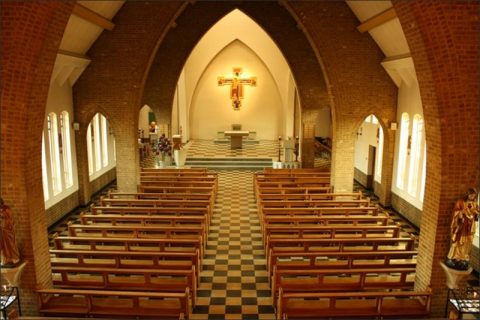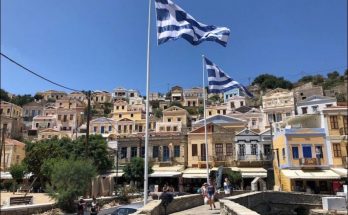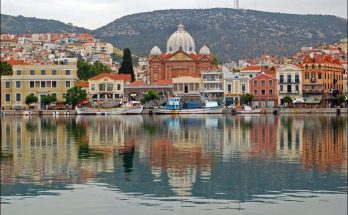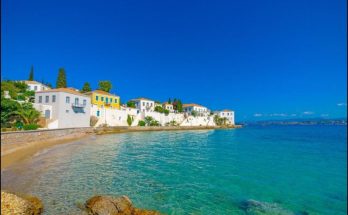The Kapnikaraia
A more staid edition of the Little Cathedral may be seen in the small church half-way down Hermes Street. In plan it is very much the same, and is simplicity itself, with three apses at the east end and a small central dome. The narthex at the west end somewhat masks the cruciform design, which, however, is evident enough in the interior. As far as the evidence of the carving goes this church seems to date from the eleventh or twelfth century. It is popularly known as the Kapnikyria, or Kapnikarea, which has been translated “Our Lady of the smoky aspect.” This derivation is based only on the sound analogy, and hardly recommends itself. In Athens there are no “smoky aspects.”
The Saints Theodore
A more staid edition of the Little Cathedral may be seen in the small church half-way down Hermes Street. Of the same date and character as the Kapnikaraia is the Church of the two Saints Theodore outside the British Embassy. It once had coloured Rhodian plates built into its outer walls, a pleasant custom of which one often finds traces in Greece. The plates have now disappeared, but the hollow circles that held them still remain. In Portugal one finds the same pretty device, and there I have seen a precious tazza of blue glass plastered like an acroterion to the gable of a cottage.
The Church of the Holy Apostles
The Church of the Holy Apostles stands a few paces south-west of the Stoa of Attalus. It is probably the earliest in date of the Athenian churches, and is also the simplest in design. Choisy quotes it as a model of its kind. The problem with all these domed churches is how the weight of the dome shall be carried without blocking the central space in the interior of the church.
In this case the dome is borne by four double arches, giving the church the form of a Greek cross, and each arm of the cross is finished by an apse. “But what is to bear the outward thrust of the double arches? Must the architect mar his work with buttresses? By a happy inspiration the double arches are consolidated by small trefoil vaults, and thus the vaults encircle the church, press closely together, and support each other, the outer ones leaning against the massive enclosing wall.” This is the building which has been described as “recondite almost to subtlety,” yet the effect is one of extreme simplicity. The ugly modern nave must be disregarded.
Visits: 135



